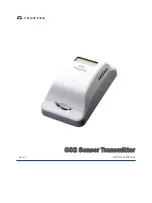
56
KPA100 Installation
We recommend disconnecting the K2's internal frequency counter
cable when the KPA100 is installed. Leaving this cable connected may
cause a slight increase in the amplitude of spurious signals on some
bands. Keep the cable in a safe place for later use.
Turn the KPA100 assembly over carefully and install it in the K2.
Make sure that the left and right spring clips don't get caught on the top
edges of the side panels. Also verify that none of the interconnecting
cables are pinched between the heatsink and side panels. (Final cable
positions will be adjusted in later steps.)
Secure the KPA100 to the K2 only at the four locations identified as
1
,
2
,
5
, and
6
in Figure 10 (page 24). Use 4-40 x 3/16"
black
pan head
screws. Do not install the remaining two screws yet.
Remove the right side panel of the K2 (four screws).
Examine the cables connecting the K2 and KPA100. Move the
ribbon cable and speaker cable toward the front of the K2. They should
not be touching the KSB2 or KNB2 modules, if present.
Hold the right side panel up to the K2, and note where the KPA100
shield clip contacts the panel. Mark this spot with a pencil.
i
Be sure to mark the
inside
of the panel. When you're looking for
the spring clip contact point, four of the five side panel screw holes
should line up with 2-D fasteners. The fifth screw hole, at the top-middle
of the side panel, should line up with the grooved channel on the KPA100
heat sink.
Lay the side panel on a soft cloth. Using sand paper or a Dremel tool
(or equivalent), remove the paint from around the marked location so that
the spring clip will make good contact. Paint should be removed from an
area about 1/4 to 1/2" (6-12 mm) in diameter.
Remove the left side panel. Mark the shield clip contact point, then
remove the paint from this area as described above.
Attach the side panels to the K2 (five screws each). The top center
screws are threaded into the aluminum heat sink. Do not over-tighten
these screws. It is possible to strip the threads in the aluminum.
Final Steps
If you plan to use the KPA100's RS-232 port for remote control of
the transceiver, follow the instructions starting on page 60.
Read the entire section titled
Using the K2/100 at High Power
,
starting on page 57, before putting your K2/100 on the air.
IMPORTANT: The hardware holding the RF power transistors
in place will loosen slightly during initial use. After 5-10 hours of
normal operation at 50 watts or more, remove the KPA100 assembly
and its shield, then re-tighten the mounting hardware for Q1/Q2
approximately 1/8 turn.
















































